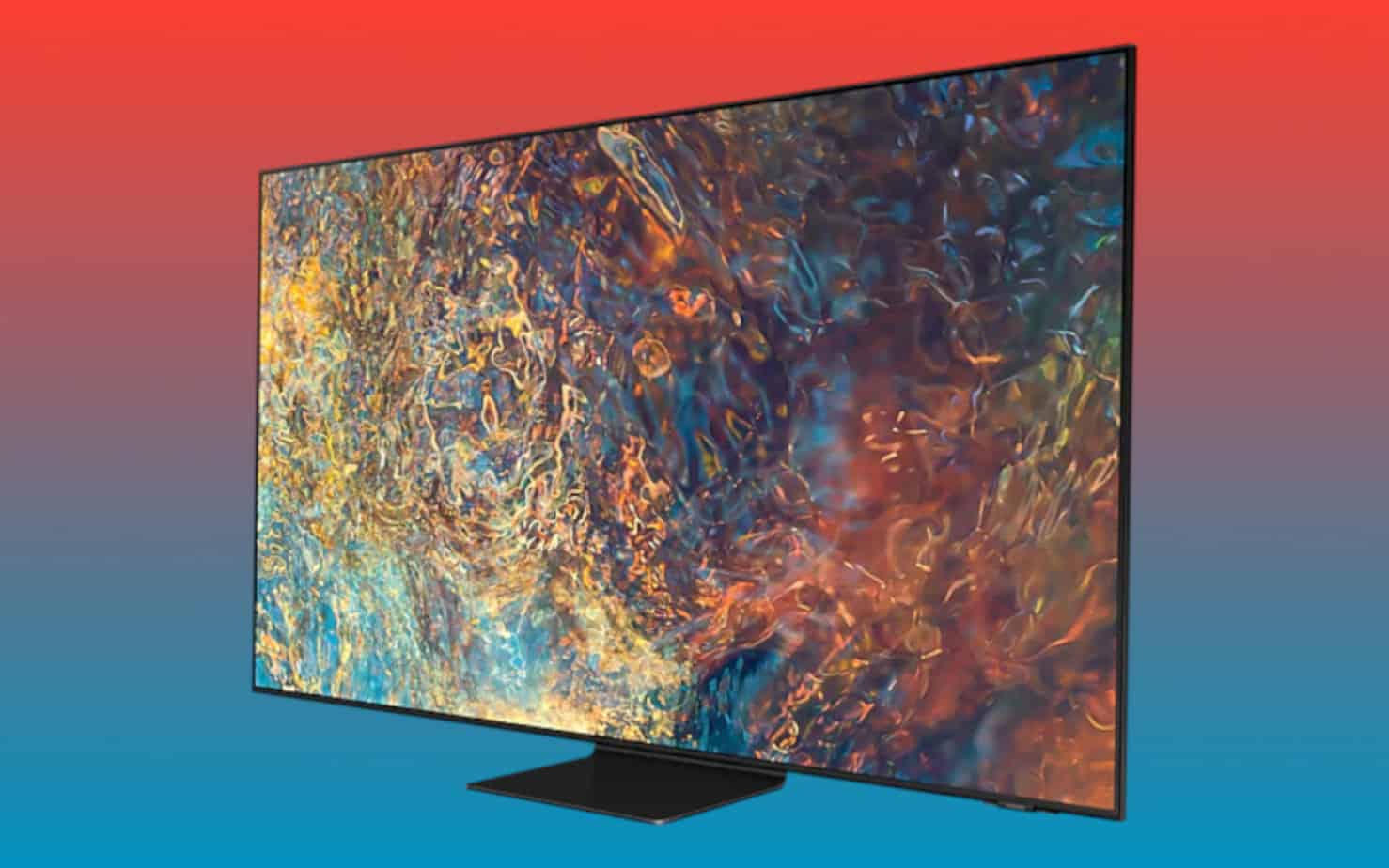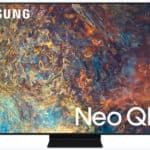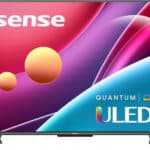Best 50-inch TVs in 2022

It used to be that 50-inch TVs were seen as a groundbreaking screen size – feeling like you were bringing a cinema screen into your home compared to the 32” or 40” TVs that most people had.
Now 50-inch TVs have been surpassed by some true giants, like 75-inch TVs, so 50-inch as a standard is starting to become less popular with manufacturers – many of whom are starting their main ranges from 55”.
Products at a Glance
But that doesn’t mean it’s any less popular with households. We’re getting to the stage now where more and more people are considering 50-inch TVs as being upper-mid sized instead of a large-screen TV, and a size that’s just right for anyone that wants an epic screen for their bedroom or who has a smaller lounge that can’t accommodate anything bigger.
How do you find the best 50-inch screens, and what are the best features you can still enjoy at this screen size? We’re here to tell you.
How we picked the best 50-inch TVs
Usually, one of the first considerations with a TV is the resolution, but that doesn’t factor into choosing the best 50-inch TV. You won’t find any Full HD TVs in this size, but nor will you find any manufacturer that’s decided to put an 8K screen in a 50-inch TV. So, every TV of this size is 4K.
So we’ve looked at some other key influences on the picture quality – the screen type, and the processor. The best screen type in a 50-inch TV is going to be a QLED option – since you won’t get an OLED or Mini LED at this screen size. But we’ve also picked out a couple of regular LED screens that have other benefits.
In terms of processor, there are some pretty high-end options in this screen size that work to maximize the quality of both picture and sound, including upscaling older content to as near to 4K as possible.
Sound plays a part, and we’ve pulled out where a TV has an interesting feature to boost the audio, but you’ll always get the best quality if you pick up a separate soundbar anyway. The other key factor in our decision has been any extra features that offer something unique, or that make your gaming experience better.
Top features and considerations
The quality of the processor is a key feature to bear in mind. Each manufacturer has its own so comparing like-for-like TVs is less simple, but the Neo Quantum range from Samsung, Cognitive Processor XR from Sony, and 5th generation alpha processors from LG all offer outstanding performance in optimizing picture and sound.
But a lot of these features were first revealed in 2021 models, and there’s not been many huge strides made for 2022. Instead, the focus this year is on gaming experience, and the tech to support it. Along with HDMI 2.1 ports to support 4K gaming at 120fps, look for TVs that have G-SYNC and FreeSync support to minimize lag and screen tearing during fast-paced action.
You also need to consider what you want from your TV and look out for features that match. If you’re not so fussed about the absolute best picture for movie night, but like the idea of a TV that fits beautifully into your home, then look for slim design TVs or those with features like The Frame’s Art Mode.
Of course, price is always a key consideration. The best 50-inch TVs are pretty pricey, and you can get decent 65-inch screens for a similar price. Equally, you can save hundreds if you want a 50-inch model that doesn’t have the very best tech – so we’ve pulled out a value option too.
Best 50-inch TVs in 2022
- Brightest indoor TV
- Intelligent upscaling with a powerful processor
- Powerful directional sound
- Expensive for this screen size
- Only 1 HDMI 2.1 port
Samsung’s Neo QLED displays combine the powerful Neo Quantum Processor with a vibrant QLED display, which results in a picture that’s crisp and sharp but also really bright, enhancing colors to be more lifelike but also really vibrant.
The processor does a great job of managing content, including upscaling older shows and movies to give them a fresh and modern feel.
This TV sounds as good as it looks too, with Dolby Atmos functionality and the impressive Object Tracking Sound+, which uses 8 dedicated speakers arranged throughout the screen to mimic the realistic movement of sound. This means you’ll hear things traveling around the room, making everything much more immersive.
The only real drawback with this TV is the gaming support. It’s not terrible – FreeSync Premium Pro helps to keep things crisp – but there’s no VRR support and only one HDMI 2.1 cable, so you may need to swap inputs around if you’ve more than one 4K console.
- Fantastic compromise between quality and price
- Great for gaming with HDMI 2.1 and VRR
- Tons of picture-enhancing features
- Not the brightest TV
- Sound is average – soundbar recommended
Not everyone has around $1,000 to spend on a 50-inch TV, but you don’t then have to buy a TV that looks terrible. This Hisense model is a great compromise, and while it doesn’t have the same quality as the Samsungs, LGs and Sonys of this world, it’s still crisp, bright and vibrant.
That’s because it uses Hisense’s own blend of technologies which it dubs Quantum ULED. In reality, it’s a QLED screen with a wide range of HDR support and smooth motion features, but they combine well to make the picture look sharp whether it’s a sun-kissed nature documentary or a moody blockbuster.
For gamers, there’s a dedicated Game Mode Plus which includes Automatic Low Latency Mode (ALLM) and a 60hz variable refresh rate (VRR) along with HDMI 2.1 for true 4K gaming.
The other real drawback to this TV, beyond it not being the very best picture, is the sound. It’s nothing special at all, and if you’re used to using a high-end TV or a soundbar then you’ll definitely notice the average speaker quality. An easy fix with a soundbar to match but then you undermine the value of the TV a little.
- Art Mode looks great when TV is ‘off’
- Quantum Dot tech provides bright colors
- Deals really well with glare and sunlight
- Quality for movies or gaming isn’t anything special
- Very expensive for this screen size
Samsung’s The Frame is a specialist TV aimed at people who don’t like a TV to stand out in their home. As a TV itself it’s pretty good – it has a QLED screen, so colors are bright and vivid, although it’s not got anything else to really differentiate it for movies or gaming.
What it does have is a matte effect coating that handles glare and sunlight amazingly and also looks fantastic when the TV is in Art Mode. This is where, when not in use, the TV will display artwork or photos depending on your selection.
It’s not a complete energy-guzzler either, since it has motion sensors that will turn the TV off completely when you leave the room, switching it back onto Art Mode when you re-enter.
If you want something that can hang beautifully on your wall then this is great but look elsewhere if you’re more serious about your viewing experience. Especially considering the price of the TV.
- Vibrant picture with accurate colors
- Enhanced upscaling
- G-SYNC and FreeSync – great for gaming
- Not as bright as equivalent Neo QLED
- Contrast not amazing
This LG TV is another great all-rounder, combining LG’s own NanoCell color technology with a Quantum Dot layer for super-accurate colors.
The contrast is a little weak, with some haloing and blues rather than blacks, and it’s not as bright as Samsung’s Neo QLED either. But in this screen size, you won’t find many screens that are as rich and vibrant.
The powerful processor also does a great job upscaling older content, and it can convert a standard dual-channel audio mix into virtual 5.1.2 surround sound using the AI Sound Pro tech.
It’s an even better TV for gamers though, with both G-SYNC and FreeSync technologies and two HDMI 2.1 ports, along with LG’s Game Optimizer to make it easier than ever to customize your gaming setup.
- Clever processor boosts picture and sound quality
- Immersive audio
- Great for gaming with dedicated PS5 features
- Viewing angles aren’t great
- Doesn’t handle glare well
Sony’s Bravia X90J is a quality mid-range TV that uses a Full Array LED display to improve local dimming significantly. This helps to boost the quality of color and detail, and helps with contrast too, although some haloing may be visible around brighter colors.
It uses Sony’s top-of-the-range Cognitive Processor XR to handle the picture and sound, maximizing the quality of each based on algorithms that understand how humans naturally see and hear movies and shows. At least that’s the claim, although we can’t complain – it does an excellent job of creating sharp images and powerful, crisp sound.
And if you’re a PS5 owner, this TV is optimized to give you the best experience. As well as running at full 4K/120fps with the HDMI 2.1 ports, it’s got exclusive features specific for the console – Auto HDR Tone Mapping and Auto Genre Picture Mode – meaning whatever you play it will always look its best.
Just be aware that this TV doesn’t have the best viewing angles, so you need to be closer to the center to enjoy all of these benefits. It doesn’t handle glare too well either so you might struggle with bright sunlight during the day.
Is QLED or OLED better?
OLED TVs are considered a better choice than a standard QLED TV because they have much better contrast and smoother motion. Neo QLED TVs are brighter than OLEDs though and split opinion much more, especially without the risk of burn-in. There aren’t any 50-inch OLED TVs available although LG do manufacture a 48-inch option.
How much should you pay for a 50-inch TV?
There’s a diverse range of prices when shopping for a 50-inch TV, and it’s even possible to get a cheap option for around $300. Realistically though the picture and sound quality won’t be great, and a decent model will cost around $550 or more, with the best choices being around the $1,000-$1,200 mark.
What’s so special about QLED?
QLED screens are the same as a traditional LED option, but they have an extra layer of quantum dots that boost the color and brightness of the image you see. The best QLED TVs also use Mini LEDs (such as the large screens in Samsung’s Neo QLED range) since these also improve contrast, but many people still prefer an OLED for its perfect blacks.
Our Verdict
With many manufacturers packing their best tech into TVs 55-inch and above, you won’t get the ultimate picture or sound quality in a 50-inch screen. But the Samsung QN90A is a great choice for a 50-inch screen, with the Neo QLED display giving amazing color and brightness.
It’s not the cheapest by some distance, but the Object Tracking Sound + does negate some of the need for a soundbar. If you’re a gamer then the LG QNED may be a better option with the extra HDMI 2.1 port and the addition of G-SYNC but for overall use, the Samsung edges it.






